Miniature Pinschers, also known as Min Pins, are a small yet spirited breed of dog known for their intelligence, affectionate nature, and loyalty. Though small, they have huge personalities and make excellent companions. This guide provides essential information on their history, appearance, temperament, care, health, training, and more that potential owners need to know.
History of the Miniature Pinscher
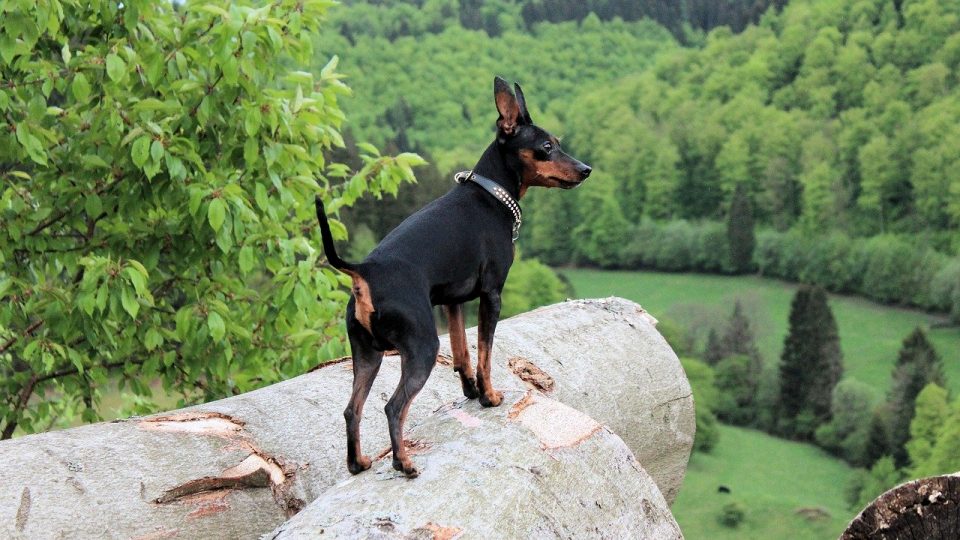
The Miniature Pinscher originated as a ratter on farms and stables in Germany during the 19th century. Their job was to hunt and kill rats and mice. Over time, farmers started breeding them smaller while retaining their fearless nature and energy. This made them excellent house pets able to keep homes free of vermin.
Early Development in Germany
In Germany during the 1800s, Miniature Pinschers were bred from Italian Greyhounds, Dachshunds, and German Pinschers. The goal was to create a spirited, small dog with the rat-catching drive of a terrier. They quickly became popular in German households.
Introduction to America
Miniature Pinschers were first brought to America in 1919 and were registered with the American Kennel Club in 1929. Their popularity as a house pet and show dog grew steadily throughout the 20th century. Today they are a beloved companion animal across the country.
Appearance
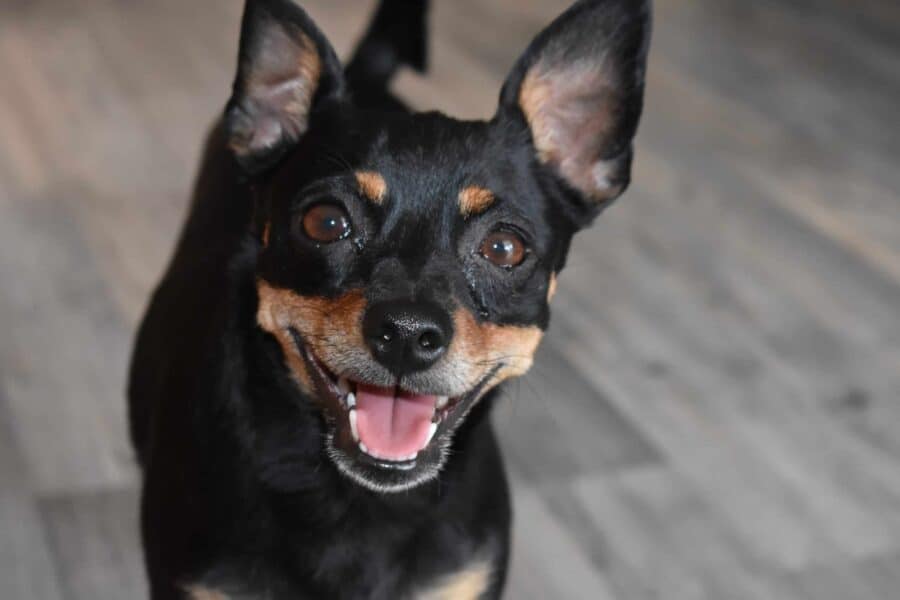
The Miniature Pinscher has a elegant, athletic look owing to its diminutive size and proportions. An average Min Pin will stand 25-30 cm (10-12 inches) tall at the shoulder and weigh 4 to 5 kg (8 to 11 pounds).
Physical Characteristics
Miniature Pinschers have a short, smooth, shimmering coat that comes in solid red, stag red (red with black hairs), black with rust markings, or chocolate with tan markings. They have slim, narrow heads with pointed muzzles and large, erect ears set high on their heads. Their neck and shoulders are muscular and blend into a narrow, straight back.
Expression and Stance
A hallmark of the Miniature Pinscher is its alert, energetic expression and self-important stance. When standing, the front legs are straight and firm while the rear legs support a firm, muscular rear. The combination gives Min Pins an immediately recognizable confidence and spirit.
Temperament

While Miniature Pinschers may be small, they have huge personalities. They are intensely loyal to their families, alert watchdogs, and even tempered with children. However, they can try to dominate other dogs.
Devoted Companions
Miniature Pinschers form extremely devoted bonds with their primary caretakers. They crave attention and spending time together. With proper socialization, they get along well with polite children who treat them kindly under supervision. Their lively, playful spirit makes them wonderful family companions.
Fierce Watchdogs
Don’t let their small stature fool you – Miniature Pinschers make excellent watchdogs. They are quick to alert their owners to any unusual sights, sounds, or smells with loud barking. Their natural wariness of strangers makes them fierce guardians despite their size.
Stubbornness Issues
Min Pins are strong-willed and occasionally stubborn, especially if not properly trained. It’s important to socialize them thoroughly and demonstrate consistent leadership. They can be prone to wanting to dominate other dogs or small pets if not taught proper manners. Early socialization prevents aggression issues.
Care and Grooming
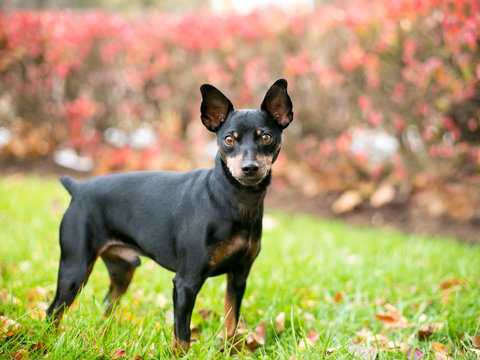
Caring for a Miniature Pinscher is relatively straightforward. Their small size and minimal grooming requirements make them an easy pet to care for.
Exercise Needs
Miniature Pinschers have a lot of energy packed into their petite frames and need a regular outlet. They should get at least 30-40 minutes of vigorous exercise per day. This can be in the form of walks, running in the yard, or active play time.
Minimal Grooming
With their short, close-lying coats, Miniature Pinschers require little grooming. An occasional brushing followed by a rubdown with a damp cloth keeps their coat healthy and shiny. Their nails should be trimmed regularly.
Watching Their Weight
One important health note is that owners need to be careful not to overfeed Miniature Pinschers. They should maintain a lean, fit shape without excessive weight gain that strains their joints and small frames. Proper portion sizes and regular weigh-ins help prevent obesity issues.
Health
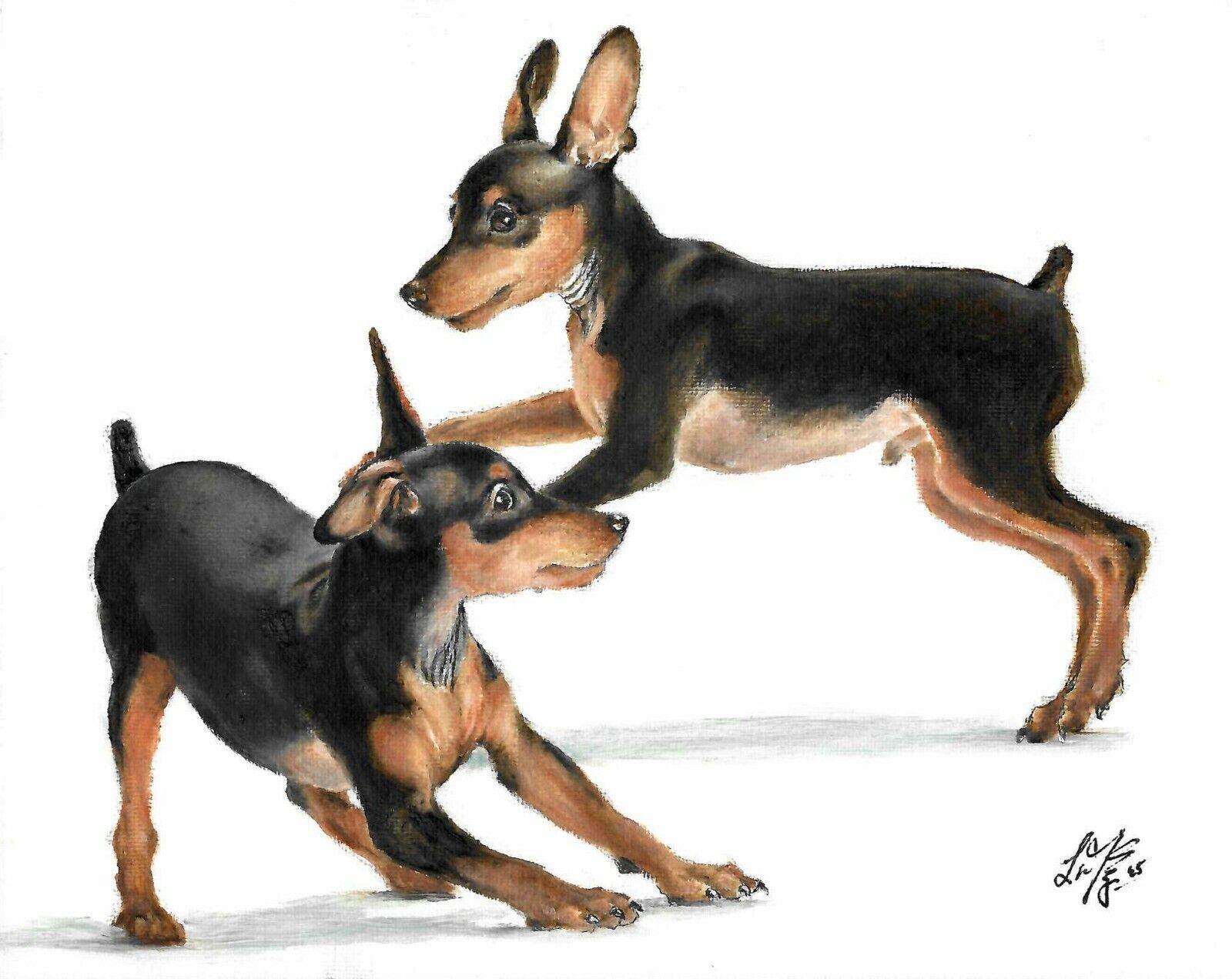
Thanks to responsible breeding practices, Miniature Pinschers are generally quite healthy, living 12 to 15 years on average. However, there are a few issues owners should be aware of.
Patellar Luxation
A common health issue involves kneecap dislocation, or patellar luxation. Signs of this hereditary condition include limping or temporarily holding the rear leg up. Severe cases may require surgery. Keeping the weight under control puts less strain on joints.
Legg–Calvé–Perthes Disease
Another potential issue affecting the hip joints is Legg–Calvé–Perthes disease. It involves a loss of blood flow to the femoral head, causing it to disintegrate. Again, keeping dogs lean helps prevent excess strain. Symptoms include limping and pain.
Eye Issues
Miniature Pinschers can be prone to several eye conditions, including cataracts, progressive retinal atrophy, and lens luxation. Veterinary ophthalmologists can diagnose and treat eye issues to prevent blindness. An annual exam checks for problems.
Training
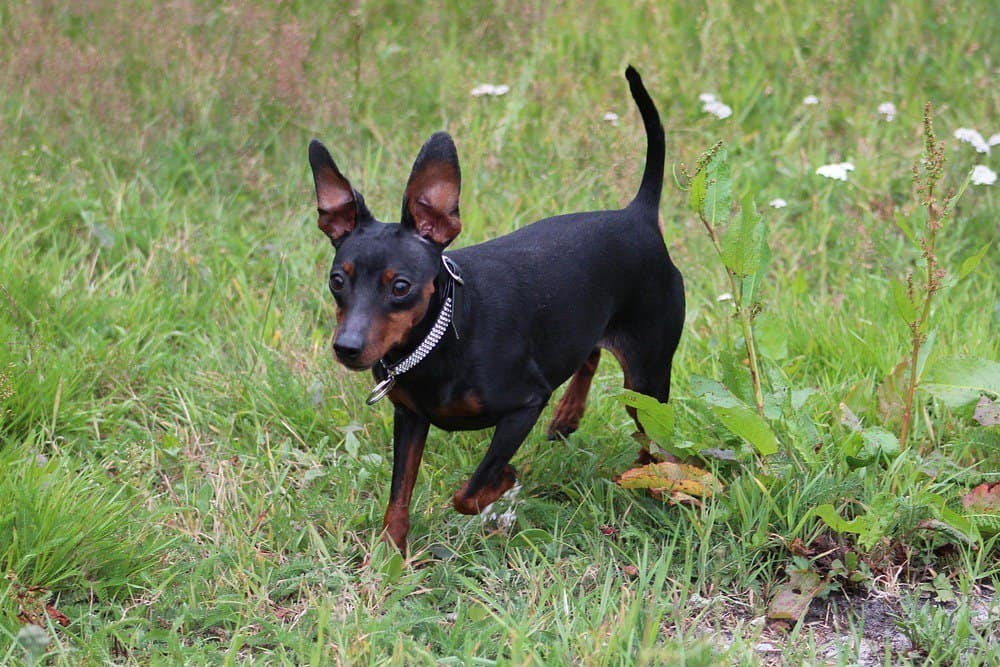
Smart and eager to please, Miniature Pinschers take well to training if it involves positive reinforcement techniques and consistent leadership from their owner.
Obedience Training
Early obedience work allows Miniature Pinscher puppies to learn good manners and commands. Attending organized training classes allows for proper socialization, too. Practice at home strengthens the human-canine bond between owner and Min Pin.
House Training Process
Housetraining requires patience and consistency. Crate training assists in this process. Frequent trips outside, praise/treats for going in designated spots, and correction for accidents help Mini Pins learn proper elimination habits.
Teaching Bite Inhibition
As mouthy dogs, Mini Pins need to be taught not to bite or nip early on. Saying “ouch!” and ending play for a brief time when puppies bite teaches them to be gentle. Redirecting biting onto chew toys also helps teach appropriate mouthing habits.
Socialization
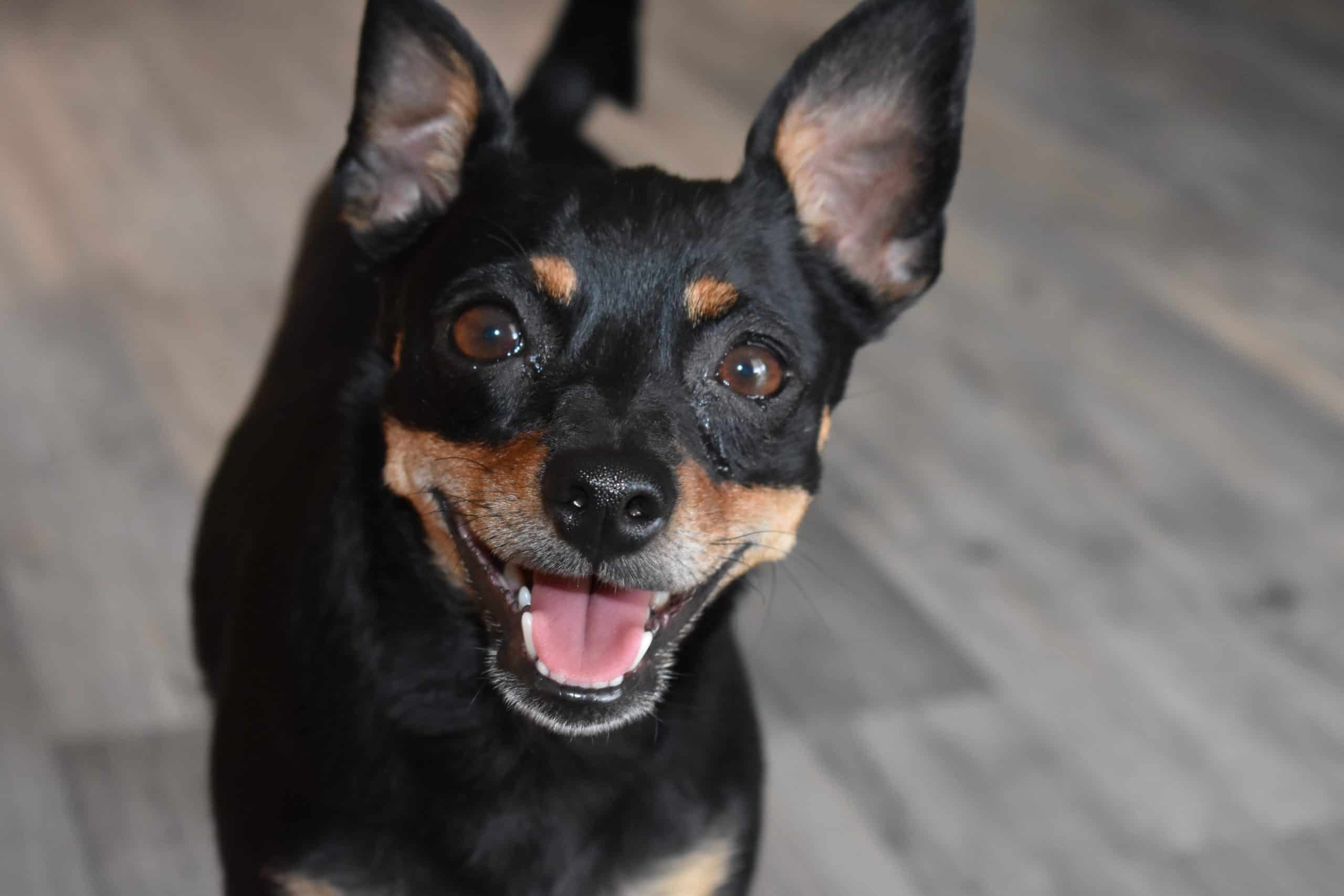
Properly socializing Miniature Pinschers is critically important for raising a confident, well-adjusted pet. Introducing them positively to a wide variety of people, animals, places, sights and sounds prevents fearfulness and aggression later in life.
Meeting Other Dogs
Signing puppies up for training classes allows Miniature Pinschers to meet other dogs in a structured setting. Visits to dog parks or play dates with friend’s dogs gives them regular social time with canine companions. This prevents hostility toward other pets.
Positive Interaction with Kids
Supervising interactions between children and Mini Pins enables positive experiences. Kids should be taught to respect the dog’s space and not tease or mistreat them. In turn, Mini Pins learn that gentle children are friends, not threats that require dangerous nipping.
Exposure to Regular Handling
Spending time touching Mini Pins’ paws, ears, tail, and mouth during daily handling and grooming ensures they become accustomed to human manipulation. Regular veterinary visits for exams accustoms them further so vet trips remain stress-free.
Conclusion
For individuals and families seeking a small yet charismatic canine companion to bring vivacious energy and loyalty into their homes, the Miniature Pinscher fits the bill perfectly. When provided proper training, exercise, socialization and veterinary care, Mini Pins thrive as devoted members of the household for years to come. Their compact size and minimal grooming quotient adds to their appeal as feisty, fun-loving pets.